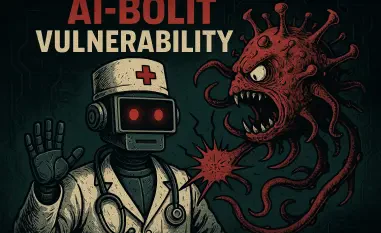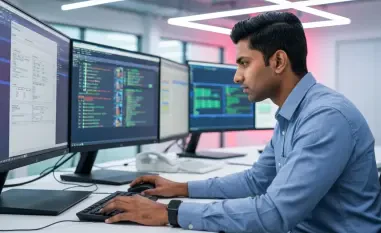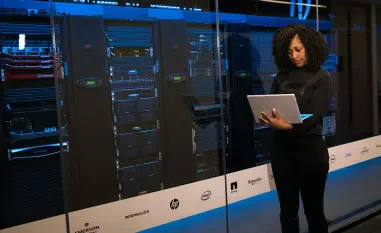I’m thrilled to sit down with Malik Haidar, a renowned cybersecurity expert whose career has been defined by his innovative approaches to tackling digital threats within multinational corporations. With a deep background in analytics, intelligence, and security, Malik has a unique ability to blend technical expertise with business strategy, making him a pivotal voice in the industry. Today, we’ll explore his insights on building strategic partnerships, leveraging technology for secure access solutions, and the broader implications of cybersecurity and AI in corporate environments. Our conversation will touch on his past achievements, his vision for integrating cutting-edge technologies, and his perspective on fostering diversity and responsibility in the tech and security sectors.
What inspired you to dive into the world of cybersecurity, and how has that passion shaped your career in building partnerships for secure access solutions?
My journey into cybersecurity started with a fascination for how interconnected systems could be both a strength and a vulnerability. Early in my career, I saw firsthand how breaches could devastate businesses, not just technically but also in terms of trust and revenue. That drove me to focus on creating robust security frameworks that protect while enabling growth. When it comes to partnerships, I’ve always believed that collaboration is key—whether it’s working with government entities or private sectors like finance and sports venues. My passion lies in aligning technology with real-world needs, ensuring that secure access solutions don’t just block threats but also build trust with end users. That’s what has guided me in forging partnerships that prioritize both innovation and impact.
Can you walk us through some of the standout strategies you’ve used to drive massive revenue growth through global business expansion in your past roles?
Absolutely. One of the core strategies I’ve relied on is understanding the unique pain points of different industries and tailoring solutions to fit their specific needs. For instance, in my previous roles, I focused on creating scalable security ecosystems that could adapt to diverse markets, from critical infrastructure to large-scale public venues. This meant not just selling a product, but offering a comprehensive strategy—advising on technology adoption, training teams, and ensuring seamless integration. By building long-term relationships with key stakeholders and emphasizing measurable outcomes, like reduced threat response times or enhanced user privacy, I was able to drive significant revenue growth. It’s about showing partners that security isn’t a cost—it’s an investment in their future.
How do you see emerging technologies like AI and edge computing shaping the future of cybersecurity, especially in secure access environments?
AI and edge computing are game-changers for cybersecurity, particularly in secure access. AI allows us to predict and respond to threats in real-time by analyzing patterns that humans might miss, while edge computing brings that processing power closer to the point of action, reducing latency in critical situations. For secure access, this means smarter authentication systems—think biometrics or behavioral analysis—that can adapt to new risks on the fly. In my work, I’ve seen how these technologies can transform environments like financial institutions or stadiums, where privacy and safety are non-negotiable. The challenge is ensuring these tools are deployed ethically, which is why I advocate for frameworks that balance innovation with accountability.
Throughout your career, you’ve been recognized for your influence in the security industry. How has this acknowledgment impacted the way you approach your work?
Being recognized by peers and industry bodies has been incredibly humbling, but it’s also a reminder of the responsibility I carry. It’s pushed me to be more intentional about the impact of my work, whether I’m developing a new security protocol or mentoring the next generation of professionals. Recognition has also opened doors to collaborate with diverse voices in the field, which has enriched my perspective on solving complex challenges. Ultimately, it’s motivated me to keep pushing boundaries—whether that’s through advocating for stronger privacy measures or driving partnerships that address real-world security needs. It’s a constant reminder that influence comes with a duty to lead by example.
As someone deeply involved in the ethical use of technology, how do you balance the drive for innovation with the need for responsibility in cybersecurity?
Balancing innovation and responsibility is at the heart of what I do. Cybersecurity is a field where cutting-edge solutions can sometimes outpace ethical considerations, and that’s a dangerous gap. My approach is to always ask: who does this technology serve, and who might it harm if misused? For instance, when implementing AI-driven security systems, I prioritize transparency—ensuring users understand how their data is being used and protected. I also advocate for strong governance, whether through internal policies or industry-wide standards. By embedding responsibility into the innovation process, we can create solutions that not only protect but also build trust, which is critical in sectors where safety and privacy are paramount.
What challenges have you encountered in fostering diversity within the security and technology sectors, and how have you worked to overcome them?
Diversity in security and tech isn’t just a nice-to-have—it’s a necessity for creating robust solutions. One of the biggest challenges I’ve seen is the historical lack of representation, particularly for women and underrepresented groups, which can lead to homogenous thinking in problem-solving. I’ve faced moments where I had to push against entrenched biases to ensure diverse voices were heard at the decision-making table. My approach has been to actively mentor and sponsor individuals from varied backgrounds, creating pathways for them to step into leadership roles. I also work with organizations to implement inclusive hiring practices and foster cultures where different perspectives are valued. It’s an ongoing effort, but I’ve seen how diverse teams lead to more innovative and effective security strategies.
What is your forecast for the future of secure access solutions in industries like finance and critical infrastructure?
I believe the future of secure access solutions in industries like finance and critical infrastructure is incredibly promising but will require a sharp focus on adaptability and trust. We’re moving toward a world where access systems will be hyper-personalized—think advanced biometrics combined with AI to authenticate not just who you are, but how you behave. At the same time, privacy concerns will drive demand for decentralized systems that give users more control over their data. The challenge will be scaling these technologies globally while navigating diverse regulatory landscapes. I foresee a stronger emphasis on partnerships between tech providers and industry leaders to co-create solutions that address specific risks, like insider threats or large-scale cyber-attacks. Ultimately, the goal will be to make security invisible to the user while being impenetrable to threats, and I’m excited to see how the industry evolves to meet that vision.













